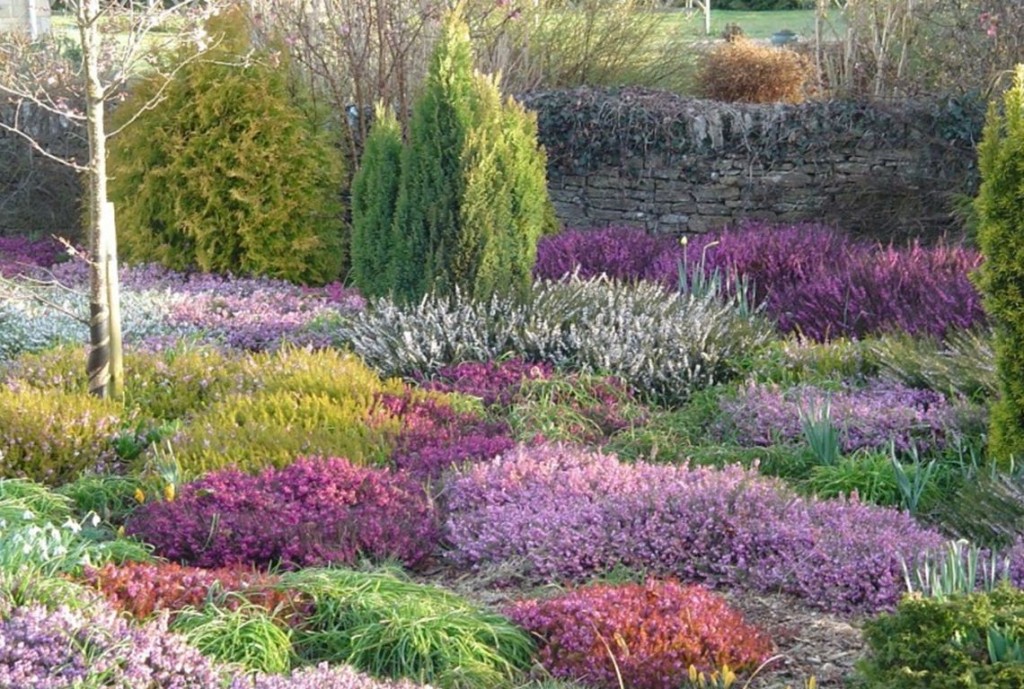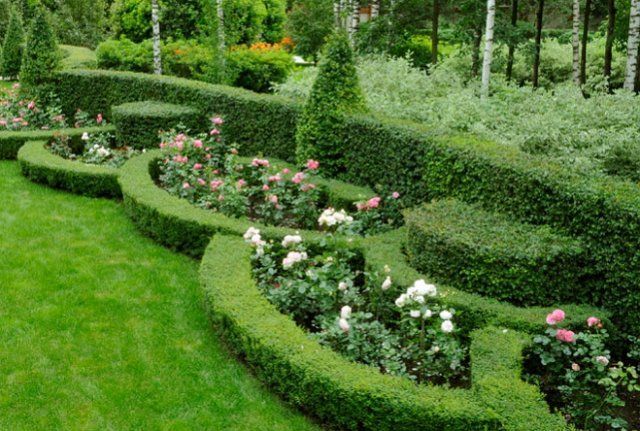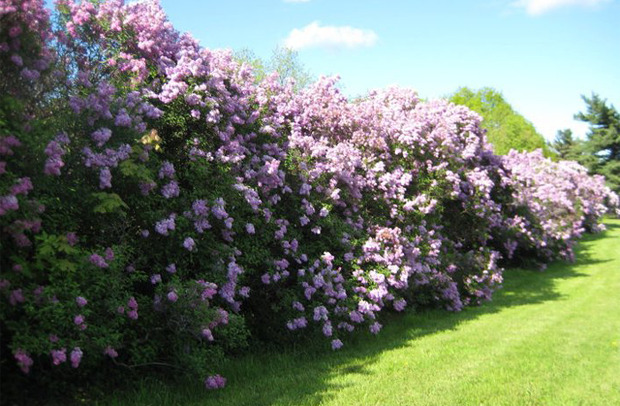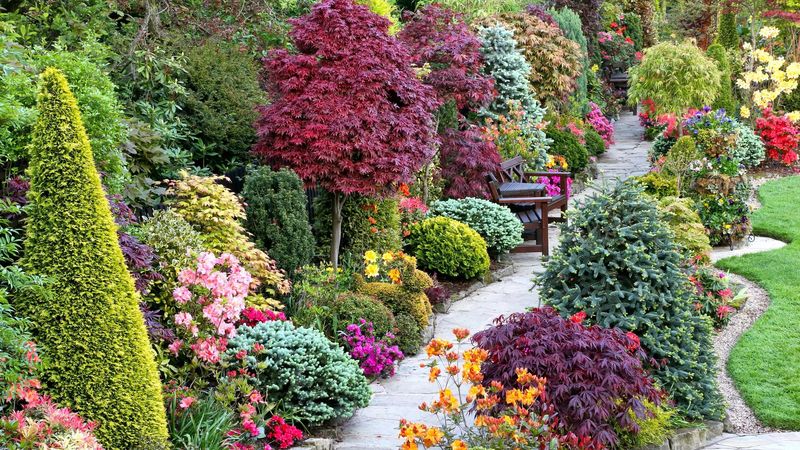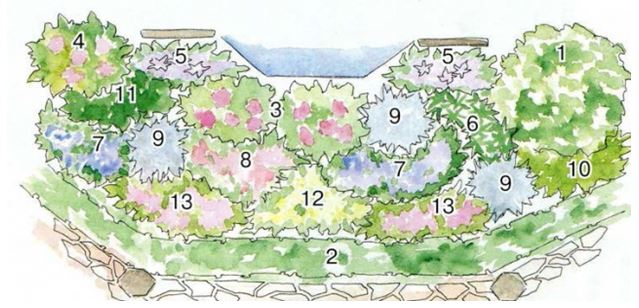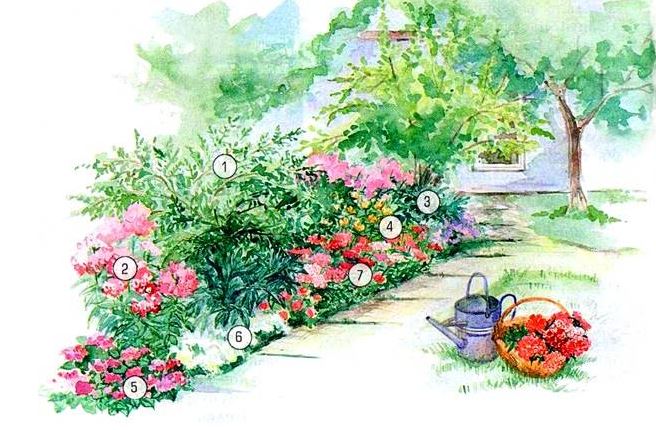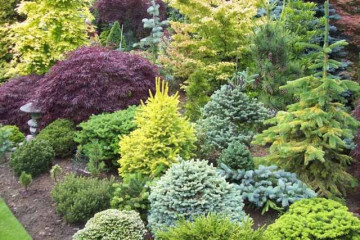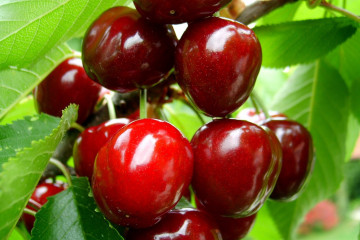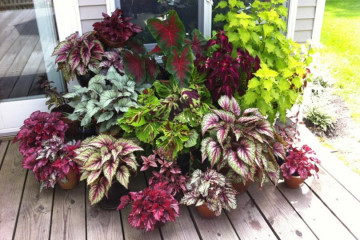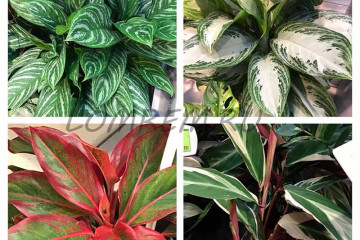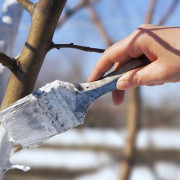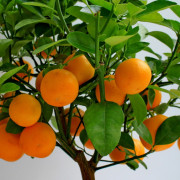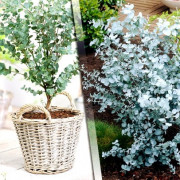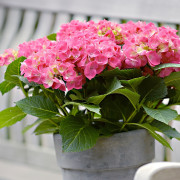Low-growing shrubs - flowering and deciduous for the garden
Content:
A hedge is a beautiful and popular landscape design feature. The height of the green fence depends on the size of the territory and the functional purpose: undersized shrubs (50 cm) are suitable for the formation of green borders, coniferous or deciduous plants with a height of 150-200 cm or more - for living walls or low fences.
Undersized shrubs for the curb
Perennial ornamental deciduous shrubs suitable for creating curb hedges include:
- undersized barberry;
- rhododendron;
- boxwood;
- cotoneaster;
- honeysuckle;
- Karagan;
- Fortune's euonymus.
The choice of unpretentious plants will be diversified by dyeing gorse, cinquefoil, mahonia, almonds, currants and gooseberries, snowberries, spiraea, chaenomeles.
Annuals will live a short but vibrant life. Crops are inexpensive and bloom beautifully. The edging is renewed annually to create fresh compositions of beautiful plants. Below is a small list of the best varieties:
- marigolds with double and simple flowers;
- sun-loving nasturtium;
- drought-resistant verbena;
- ageratum with amazing blue color;
- ground cover iberis;
- silvery cineraria;
- lush argiranthemum (proper cultivation and care at home allows the annual to reach the size of a shrub).
The overall impression of the work of art depends on how the frame matches the picture. Border flowers create a kind of frame, bordering flower beds, paths, beds in gardens with a geometric layout. However, in natural-style gardens, curbs are not used at all. Bricks, tapes or fences can be used as fencing. It's a matter of taste. The use of fresh flowers where appropriate is always impressive.
What shrubs are used to make hedges
When arranging a hedge on a site, an important point should be clarified: shrubs will grow freely or in a certain shape. In home gardens, the sheared version is more common.
The group of freely growing ornamental deciduous and flowering plants for the garden is made up of lilac, honeysuckle, chubushnik, tree hydrangea, Japanese quince, fruit almonds. Hawthorn, snowberry and elderberry are favorably positioned.
The upper tier of the fence (up to 3 m) will allow the formation of a linden or hornbeam with a dense, easily formed crown. Often, landscape designers form a living fence with maple, mulberry, rough elm. Among evergreens, the most suitable are:
- thuja western, harmoniously complementing the garden design;
- juniper - drought-resistant evergreen;
- yew berry - a durable plant found on fertile and moist soils;
- spruce growing on wet ground, in the shade.
It is convenient to form fences of medium height with bushes of black cotoneaster, meadowsweet, privet, red and white sod. Sometimes it becomes necessary to create a barbed fence. Common barberry, narrow-leaved elk, pyracantha will help to cope with the task.
Low-growing deciduous shrubs are suitable for the formation of a perennial sheared border: boxwood, holly magnolia, meadowsweet and Japanese quince. Evergreen fences are formed by thuja and spruce.
Perennial shrubs for northern regions
Ornamental shrubs for Siberia
Bushes of hydrangea, mock orange, bladder, turf, cinquefoil, barberry, weigela and deytsii are the most popular ornamental shrubs for Siberia. Most crops are damaged at a certain level during the cold season. Low-hardy, but quickly recovering individuals (hydrangeas, spireas, mock-mushrooms) are suitable for successful planting in the fall. Winter-hardy varieties (bubbly, derain) also easily cope with autumn plantings. Budleya, calicant, cistus, karyopteris, holly, boxwood are the most popular perennials that grow successfully in the northern regions of the country.
Ornamental shrubs for the Urals
The longevity of decorative undersized and medium-sized shrubs for the Urals is ensured by a developed root system, early termination of nitrogen feeding, planting along vertical shelters from the wind, and thorough wrapping with agrofibre for the winter.
The rating of unpretentious shrubs for the northern regions is headed by:
- Honeysuckle (Latin name - Lonicera) is a climbing, fragrant culture with paired white flowers.
- Juniper is the best specimen for lawn or path framing and goes well with a variety of horticultural crops.
- Rowan, creating an amazing symbiosis with fir and spruce.
- Dahurian rhododendron, which attracts the eye to the pink bloom in spring.
- Barberry Thunberg.
- Rosehip.
- Bush cinquefoil.
Under the cover of the mountainous reliefs of the middle Urals, the species listed above, as well as maiden grapes, frost-resistant sod, viburnum, spirea, and hawthorn are successfully developing. In the south, it is possible to breed a snowberry, chubushnik, forsythia.
Flowering shrubs for the Urals
In the Urals, thermophilic perennial shrubs and shade-loving flowering plants are grown for summer cottages. The following crops are most unpretentious to severe weather conditions:
- budlei - shrubs 2-3 m high with pink, purple, white flowering;
- spirea - an unpretentious individual with airy-looking caps during flowering;
- Calicant, delighting those around with water-lily flowers;
- evening primrose (shrub primrose) is the most hardy and unpretentious species in a family of 140 varieties;
- hibiscus is an ornamental shrub with bright large buds;
- crocuses - purple bulbous flowers;
- muscari, enlivening the borders with white, blue, purple pimples;
- creeping, erect varieties of shrub argiranthemum, impressive with a variety of blooms of yellow, white and pink shades;
- Calcium, similar to Chinese lanterns;
- weigela with juicy green leaves and white-pink buds;
- almonds are a light-loving plant that lives up to 130 years;
- jasmine is the owner of an alluring aroma.
Among the beautiful and unpretentious flowering shrubs, gardeners rely on cotoneaster, yellow jasmine and red barberry.
Shrub and perennial mixborder
Competent selection of flowering shrubs, decorative perennials for mixborders is carried out taking into account the height, root system of the plant, flowering period and colors. A pleasant impression is made by flower beds, built on the contrasts of purple and yellow, red and green, blue and orange. When planting, it is enough to correctly make accents with large buds, complementing the composition with small-flowered individuals of a contrasting shade with small spots.
Monochrome mixborders based on a triple palette of colors with a smooth transition of shades look refined and deep. White flowers are used to revive the monochrome. At the same time, green foliage plays an important role in the design of the mixborder, supporting the splendor and decorativeness of the flower garden. In order to facilitate the work of drawing up bright and elegant compositions, landscape designers suggest using ready-made mixborder schemes.
Fragrant flower garden
The skeleton of the composition is 2-3 dwarf conifers (3), cinquefoil (1) and Ferdinand I's saxifrage (4).
Then the plants are grouped. Hybrid, lush, wedge-shaped, paniculate, musk saxifrage are planted under numbers 5, 6, 7, 8 and 9. Pinnate cloves (10) will add delicate colors and a special aroma to shrubs. The stone rose (11) will become the highlight of the flower bed, the Thunberg barberry (2) will become an elegant border.
Single sided mixborder
Creating a luxurious composition that can decorate one wall of a building or fence requires adherence to the correct planting sequence:
- The cone-shaped box (9) is placed on the side of the flower garden.
- Clematis (14) will provide a red or white flower bed background.
- In the interval between clematis and boxwood, cultures of medium height will organically fit: hatyma (13), echinacea (12), decorative onions (6), verbena (8), Korean mint (11).
- Silver notes of wormwood (10) add lightness and set off the boxwood.
- In front of the flower garden, it is worth taking a place for aniseed lofant (7), Kuril tea (5), pelargonium (3), the majestic Endressa geranium (1), alchemilla (2) and coreopsis (4).
Flower garden for beginners
A simple and versatile scheme, embodied in one-sided and two-sided versions, deserves the attention of novice gardeners.
Refined jasmine will become the skeletal shrub of the mixborder (1). Peonies (2) and phloxes (3) will be spread on the right and left. Lilies (4) and Houston Ageratum (5) will provide the middle layer of medium-sized crops. Among low plants for creating a border, sea lobularia (7), Turkish carnation (8) will be an acceptable option.
Mixborder with hydrangea
Exquisite hydrangea is wonderfully combined with majestic and simple plants, allowing you to create mixborders of radically different styles. The principle of organizing a living edging with hydrangea implies the planting of perennial garden shrubs with an appropriate flowering period: poplar, small petals, daziphora. The mixborder will be brightened by crops in catchy colors with long flowering, for example, Gaillardia, Coreopsis, Rudbeckia.
Mixborder with hydrangea and conifers
The combination of coniferous trees with hydrangea creates a feeling of perfect purity against the background of noble greenery or cold blue. Delicate fluffy flowers in the vicinity of thujas are a great idea for creating a Mediterranean-style plot. A more daring solution would be a combination of white hydrangea, iris, western juniper, bubbly and creeping flowers.
Luxurious azalea, dahlias and roses also make a good companion of hydrangeas with evergreen shrubs. Conifers help deciduous varieties to overcome various diseases and prevent the appearance of pests. At the same time, thuja, spruce, juniper have an open root system, planting of plants occurs in spring.
Ground cover shrubs
Ground cover (creeping) shrubs organically complement the landscape design of the garden, form a green or variegated cover, partially prevent the growth of weeds, and decorate the territory.
Light-loving shrubs
How to choose a perennial for the continuous decoration of illuminated areas to a height of 15-30 cm:
- Sedum are undersized shrubs that fill the foreground of flower beds and terraces made of decorative stone with small inflorescences of yellow, white, pink and red tones.
- Arabis, covered with white and pink color (simple and terry), for 14 days gives a special atmosphere to rock gardens, flower gardens, borders.
- Herbaceous carnations are represented by extensive green and gray-blue carpets, decorated with pink, white, red blooms in rock gardens and flower beds.
- The rejuvenates decorate the landscape in summer with white and red flowers. The green and purple leaves are reminiscent of small roses that stretch along massive squares.
- Bells, perennial shrub aster, thyme with small flowers form large clumps of rock gardens and front flower beds.
Planting perennials in the shade
The need to plant shade-tolerant perennials arises when it is necessary to hide voids under trees, on slopes and in ravines, on darkened paths. The foreground of shadow compositions is usually decorated with a coin-like loosestrife, creeping tenacious (the average height of shrubs is 10-15 cm). Planting vegetation with a height of 30-50 cm with spectacular foliage is preferable under trees. The favorites are hosts with green, blue, yellow, and white-bordered foliage, with a rosette diameter of 40-150 cm.
Lancet and forget-me-nots cover the soil up to 30-40 cm with lanceolate or heart-shaped foliage, with gray stripes and spots. Badan creates a continuous flooring in the shade and sun, blooms with pink buds. Astilbe cope with the tasks of covering plants. Florists will appreciate the long, lush bloom (from white to red tones) and shade tolerance.
Practical recommendation. Don't get carried away with variety. Often, fashionable novelties of compact shrubs look natural in compositions planted in groups of several specimens. For a small garden (up to 10 acres), it is advisable to group crops of the same type into spots with an area of 0.5-1.5 m².
